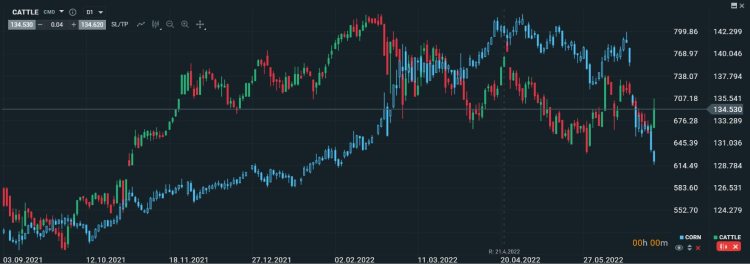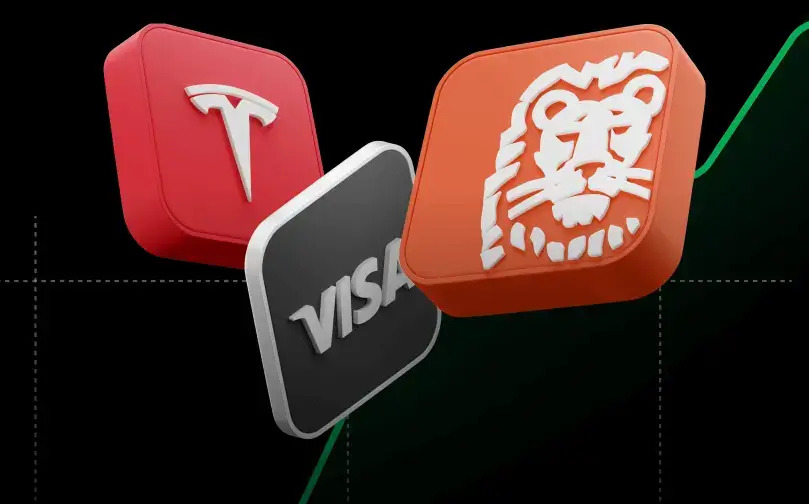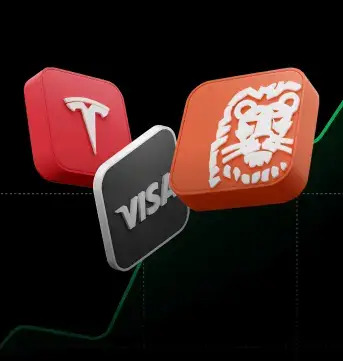Live cattle are adult cattle that weigh between 1,200 and 1,400 pounds that are required for slaughter, but this may vary by breed. The beef industry is a rapidly growing sector worth trillions of dollars with a global reach. The breeding and processing of beef provides jobs for millions of people around the world, including suppliers, distributors and retailers. Due to the growing number of the world's population and the general increase in wealth of developing countries' populations, the demand for beef may increase in the future. However, one needs to remember that investing in this sector is associated with high risk as several factors, including weather and disease, can lead to an increase or decrease of supply and demand for cattle.
Live cattle are adult cattle that weigh between 1,200 and 1,400 pounds that are required for slaughter, but this may vary by breed. The beef industry is a rapidly growing sector worth trillions of dollars with a global reach. The breeding and processing of beef provides jobs for millions of people around the world, including suppliers, distributors and retailers. Due to the growing number of the world's population and the general increase in wealth of developing countries' populations, the demand for beef may increase in the future. However, one needs to remember that investing in this sector is associated with high risk as several factors, including weather and disease, can lead to an increase or decrease of supply and demand for cattle.
Primary use of cattle
Cattle are mainly farmed as a food source. However, meat and dairy products are just a few of the items which are derived from live cattle. By-products of beef production, including oleo gelatine, oil and stock, are extracted from beef fat and are used in production of margarine, chewing gum, canned meats and sweets. Beef hide is used in the manufacture of various items, such as textiles, brushes, footballs, base for ointments and insulation materials. Beef fats and fatty acids are used to produce industrial oils, cosmetics, pesticides and detergents. Buttons, piano keys, glues and fertilizers are made from bones, horns and hooves.
Major cattle producers
The US is the leading beef producer in the world by some margin, followed by Brazil, which faced massive criticism for expanding its cattle industry, which led to deforestation in the Amazon rainforest and wildfires.
Surprisingly, one of the major producers is India. The vast majority of citizens of this country do not consume beef for religious reasons. Nevertheless, slaughterhouses process a very large amount of animals, especially water buffalo, which are then sent abroad to other Asian and middle east countries, like Vietnam, Egypt, Malaysia and Saudi Arabia.

Most cattle production occurs in the US, Brazil and EU. Other notable producers are China, India, Argentina and Mexico.
Source: Statista

After the United States, China and Brazil are the second and third biggest beef consumers. China, South Korea, and Russia comprise three of the top five global importers of beef, while Brazil, US and Australia are largest exporters.
Source: Statista
What affects the price of cattle?
Several factors influence the cattle market, the most important of which are:
- Demand for beef depends on the wealth of the consumers, as in general this type of meat is more expensive than pork or poultry. In times of economic growth, beef consumption increases, while during recession many consumers switch to cheaper meat substitutes and beef prices move lower.
- Feed prices account for the majority of production costs. Major producers and traders often use hedges in which they use relation between live cattle prices and grains, for example corn. In general, they expect high correlation between prices of both instruments. These worked fine since the beginning of the 2021, however, in recent days this correlation weakened due to recession fears. Also, higher corn prices may sometimes force producers to bring cattle to market prematurely. During an economic downturn this often causes oversupply and pushes prices even lower.

Cattle and corn prices comparison. D1 interval. Past performance is not necessarily indicative of future results, and any person acting on this information does so entirely at their own risk.
Source: xStation5.
- USDA report - United States Department of Agriculture (USDA) releases a report every month which describes current market conditions and future expectations, and often causes major price movements. The report focuses on three major sections: Cattle and calves on feed – which provides the approximate number of animals which will be transferred to slaughter houses in the near future. Placements sections show the number of cattle in feedlots that are being fed to produce a grade of ‘select’ or better by the USDA. Finally marketing reveals how many cows have been moved out from feedlots to be slaughtered.
What could make cattle an interesting investment opportunity?
Inflation shield - due to surging inflation food prices rose sharply in recent times and this tendency is expected to continue. Therefore, investing in cattle is used by some traders as a hedge against the loss of purchasing power.
Diversification - investing in cattle allows investors to diversify some portion of a portfolio out of stocks and bonds and allocates funds into the commodity market.
Rising demand from developing nations and especially China, may push the price higher. However, a lot will depend on global growth. Even without China, one needs to remember that the world population has increased exponentially, and competition for food will continue to strain the fundamentals of cattle and other foods when supply shortages appear.
However, investors also need to take into account the potential risks. As history shows, global recession often negatively affects demand for beef and its prices. Also many consumers want to keep up with the global nutritional trends and switch to a vegetarian or vegan diet, or to a large extent limit their consumption of meat. Also, some activists pointed out that beef production is heavily energy-intensive and may negatively impact our environment. Moreover, prices may take a steep dive in case of return of bovine spongiform encephalopathy (BSE), also known as mad cow disease.
How to trade cattle
Investors have several opportunities to invest in cattle, including shares, ETFs and futures. However Contracts for Difference (CFDs) are the most popular way to join this market. This financial instrument is available at XTB under ticket CATTLE and enables speculation on the price of beef without owning the underlying assets. However, first the client will have to pass an adequacy test, which allows the broker to assess whether he or she has the appropriate knowledge and experience to invest in CFDs. The possibility of taking long positions (purchase order) or short positions (sales order) in combination with the use of the financial leverage mechanism makes these types of contracts currently one of the most flexible and popular types of trading on financial markets. However, one needs to be aware that CFDs are complex instruments and come with a high risk of losing money rapidly due to leverage.
Summary
The cattle market provides an interesting investment opportunity, especially as the global population rises quickly and demand for beef may increase. Also, it could provide some protection against inflation and is a great way to diversify your portfolio. However, one needs to remember that cattle can be extremely volatile, as the majority of the participants involved are industry players looking to hedge and secure prices, which often attracts a lot of speculators.

Is Gold Becoming the World's New Reserve Currency? | Gold Investing

The history and future of Natural Gas

The History of Gold Mining
This content has been created by XTB S.A. This service is provided by XTB S.A., with its registered office in Warsaw, at Prosta 67, 00-838 Warsaw, Poland, entered in the register of entrepreneurs of the National Court Register (Krajowy Rejestr Sądowy) conducted by District Court for the Capital City of Warsaw, XII Commercial Division of the National Court Register under KRS number 0000217580, REGON number 015803782 and Tax Identification Number (NIP) 527-24-43-955, with the fully paid up share capital in the amount of PLN 5.869.181,75. XTB S.A. conducts brokerage activities on the basis of the license granted by Polish Securities and Exchange Commission on 8th November 2005 No. DDM-M-4021-57-1/2005 and is supervised by Polish Supervision Authority.




